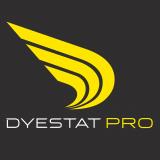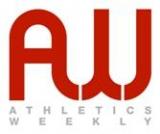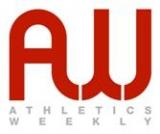Folders |
Sitting stretches for athletesPublished by
Sitting for hours while driving or at a desk can harm your running, but some stretches while you do so can alleviate problems, as Jenny Blizard explainsWith some studies indicating that the average person sits driving for more than five years in their lifetime, it is no wonder our bodies start to complain. Modern living, traffic congestion and the economic climate mean that more and more of us are driving for longer periods, either to and from our place of work, or as part of a daily routine. As nature did not intend for us to be so inactive for long periods, then our bodies are struggling to accommodate to move efficiently and painlessly from sitting while driving to heading out for a run straight after work. The good news is that with some simple exercises, you can not only maintain but also improve your flexibility and reduce your injury risk all while you drive. The nervous system and movementThe principal function of the nervous system is conduction the transmission of a nerve impulse along a nerve fibre. This means, for example, allowing a muscle to contract. To do this effectively the nervous system needs to bend and stretch and tolerate some compression as well as having an excellent blood supply network. The nervous system is very blood-thirsty just the brain and spinal cord require 20 per cent of the whole body s available supply of oxygen in the blood circulation. For example, the pins and needles when you wake up having been laying on your arm is a sign that the blood supply is not adequate enough. Experiments have shown that just small compressive loads of only 20 to 30mmHg and elongation stresses of only 6 to 8% of the nervous system, held for up to an hour, alter the blood supply significantly to the nervous system and this takes some time to reverse. From standing erect to bending forward to touch the toes the nervous system has to lengthen overall by 9cm. During a forward stride while running the sciatic nerve in the back of the leg has to move from its rest position and accommodate an increase in movement of 12%. Add in trunk rotation to the opposite side, the nervous system is then elongated through the trunk and into the arms, hence being pulled from either end. Restriction of the nervous system in the shoulder can have an impact on the tension in the muscles in the opposite leg. A left-sided shoulder restriction can literally cause an Achilles problem on the right leg. Hopefully, it s beginning to become clear now that driving places compressive and elongative loads on the nervous system legs and arms are outstretched and the spinal column is under constant tension. This will then have an impact on your ability to run efficiently if you drive for prolonged periods. The good news is that you can help yourself easily. Clinically, I have not only seen people maintain their flexibility and fluid motion of the nervous system, but also make improvements, just from exercising while driving. You can experiment with this yourself later. Here I explain just some of the common disorders I see, which when assessed are as a result of postural positions at work that affect the nervous system and spinal column, which in turn create a problem. It is my experience as a clinician, that the source of the problem often (but not always) has very little to do with the local problem, which you would perceive as pain, swelling, stiffness and movement restriction. More interestingly, athletes come to see me with a clinical picture of a specific running injury such as plantar fasciitis, calf strain, shin pain and hamstring pull, but the cause is actually more to do with what happens in their life when they are not running. The key point here is look after your spine and nervous system and many other problems will disappear or may never occur in the first place. Exercises while you drivePerform these exercises every hour while driving, 10 times each exercise: Chin retractions (pic below, left): Sit up tall and retract the head over the shoulders while maintaining the eyes in the same position. The head must not move up or down, only backwards. Hold for a brief period.
The above exercises mobilise the vertebral column at key points where the nervous system is known to have its blood flow restricted or become compressed. This is because of the anatomy of the particular joints a narrowing of the spinal canal along with lack of movement due to the driving position, both of which compress the nervous system and restrict blood flow. If you have performed the exercises in the panel correctly, you should feel heat being generated in the area that you have mobilised due to increased blood flow. Extra tipsIf you can, stop every two hours, get out of your car, perform 10 back arches and walk for five minutes. The above exercises are also easily transferable over to a desk situation. Use these while travelling to races and preventing that initial stiffness on getting out of the car. Your nervous system is very sensitive to stress movement reduces stress. ExperimentBefore you get into your car, bend forward to touch your toes and see how far you can reach. Repeat this again at the end of your car journey, after performing multiple sets of the exercises throughout. Precautions: If you currently experience any undiagnosed pain, then you need to have your problem assessed before commencing with these exercises. Common disorders associated with postural positionsLower limb Hamstring strains/pulls Upper limb Headaches Jenny Blizard is a chartered physiotherapist who competed for GB in athletics, triathlon and duathlon. Visit blizardphysiotherapy.co.uk or email [email protected] The post Sitting stretches for athletes appeared first on Athletics Weekly. Read the full article at: www.athleticsweekly.com
|












